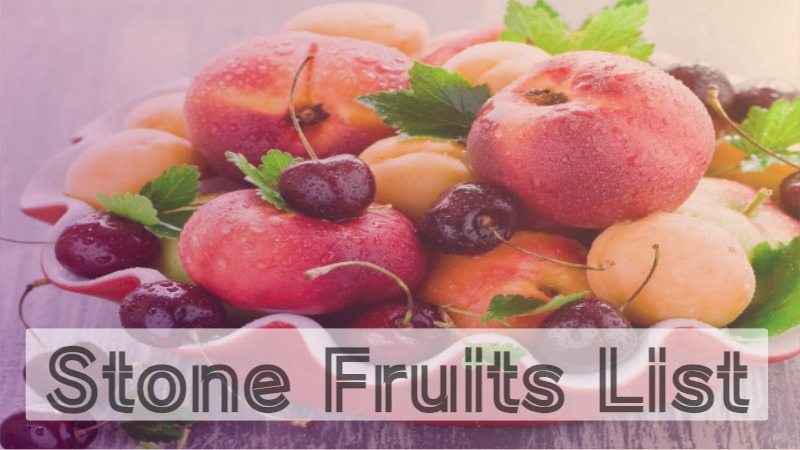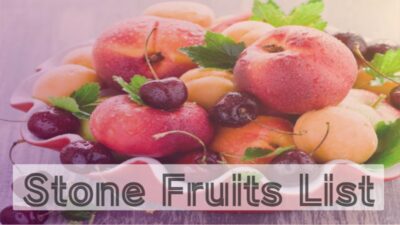
Stone fruits, also known as drupe fruits, are a type of fruit belonging to the genus Prunus within the Rosaceae family. They are characterized by having a single large seed or pit (endocarp) surrounded by a hard, woody endocarp or tough outer layer, often referred to as a “stone” or “pit.” The fleshy edible part of the fruit surrounds this stone. These stone fruits vary in size, color, flavor, and nutritional composition.
The stone or pit contains the seed of the fruit, and in some cases, the seed is edible or used to extract oils (e.g., almonds and olives). The term “stone fruit” is derived from the hard stone or pit that surrounds the seed. They are often enjoyed fresh, dried, in jams, as ingredients in various dishes, or used to make juices and other beverages.
Also Read: Nightshade Vegetables & Fruits List
Stone Fruits List
- Peach (Prunus persica) – Varieties includes Clingstone, Freestone, Nectarine (a smooth-skinned peach variant)
- Plum (Prunus domestica) – Varieties includes European plum, Japanese plum, Damson plum, Mirabelle plum
- Cherry (Prunus avium, Prunus cerasus) – Varieties includes Sweet cherry, Sour cherry
- Apricot (Prunus armeniaca)
- Nectarine (Prunus persica var. nucipersica) – A smooth-skinned variant of peach
- Almond (Prunus dulcis) – While commonly known for its seed (the almond nut), it is botanically a drupe.
- Mango (Mangifera indica) – There are various types of mangoes with different flavors and characteristics.
- Pluot – A hybrid fruit derived from a cross between a plum and an apricot.
- Aprium – A hybrid fruit derived from a cross between an apricot and a plum.
- Peachcot – A hybrid fruit derived from a cross between a peach and an apricot.
- Cherry Plum – A hybrid fruit derived from a cross between a cherry and a plum.
- Peach Palm (Bactris gasipaes) – Commonly used for its edible fruit and palm hearts.
- Greengage (Prunus domestica subsp. italica) – A variety of plum with greenish flesh and a sweet-tart flavor.
- Mirabelle Plum (Prunus domestica subsp. syriaca) – A small, sweet plum typically used for making jams and preserves.
- Sloe (Prunus spinosa) – A small, dark blue fruit used to make sloe gin and other liqueurs.
- Quince (Cydonia oblonga) – While not a true drupe, the quince has a similar structure with a central seed surrounded by a tough core.
- Jujube (Ziziphus jujuba) – Also known as red date or Chinese date, it’s a small fruit with a pit in the center.
- Coconut (Cocos nucifera) – The seed of the coconut is considered a drupe, with the edible part being the endosperm.
- Olive (Olea europaea) – Although primarily known for its oil, olives are drupe fruits with a pit containing a single seed.
- Blackthorn (Prunus spinosa) – Produces small, dark blue to black fruits known as sloes.
These fruits may have varying degrees of sweetness, tartness, and uses, ranging from fresh consumption to processing into various food products like jams, jellies, juices, and alcoholic beverages.
Structure of Stone Fruit
The typical structure of a stone fruit includes three main layers:-
- Exocarp: The outermost layer of the fruit, often the skin or peel.
- Mesocarp: The middle layer, which is usually fleshy and represents the edible part of the fruit.
- Endocarp: The innermost layer, a hard, stony shell that encases the seed.
Some common stone fruits include peaches, plums, cherries, apricots, nectarines, and mangoes. These fruits are widely cultivated and consumed around the world, either fresh or processed into various products like jams, juices, pies, and more.










